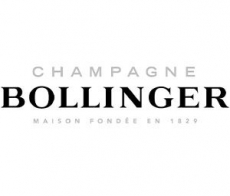Region: France

The History of Bollinger Champagne
The House of Champagne Bollinger The continuity of a style. We often hear that the House of Bollinger incarnates a style. Most certainly Bollinger proposes to great wine-lovers something difference and unique in champagne . This specific style is bound to a family history that, for generations, chose to stay close to its land while ensuring it developed its international reputation. An Independent House. In times of merging of businesses, the House of Bollinger remains faithful to its tradition. It is one of the last family and independent Houses of the Champagne trade and it intends to continue that way. A Quality Policy. Heirs of the style, the members of the present management clearly asserted their wish to ensure the continuity of the Bollinger style in a Charter of Ethics and Quality published in March 1992. The Bollinger vineyard estate is the foremost guarantee of the quality and consistency of the House's wines. With 152 hectares (375 acres) of vineyards situated in the best villages, Bollinger is one of very few Champagne Houses to supply two thirds of its own grape requirements. The remainder is assured by long-term contracts with growers who supply Bollinger with grapes or grape must. The House of Bollinger selected a limited number of villages, about thirty situated in the heart of the Champagne area, in the grands crus and premiers crus. The Bollinger style is derived from Pinot Noir grapes. These are grown in the very best crus, particularly in the most famous of these, the grands crus of Aÿ, Bouzy and Verzenay. Primary fermentation reveals the character and style of each individual cru. After the grapes have been crushed, Bollinger retains only the best juice from the first pressing, known as cuvée. The taille, which is produced by the second pressing, is sold off. If, however, the harvest is excellent, the House of Bollinger will keep the taille from the Chardonnay. Primary fermentation is carried out separately for each individual cru and for each grape variety in small tanks or barrels in order to follow the typicity of each parcel of vineyard. Bollinger is one of the last Houses to practice fermentation in wood, in small oak barrels. The House of Bollinger employs the last cooper of Champagne.